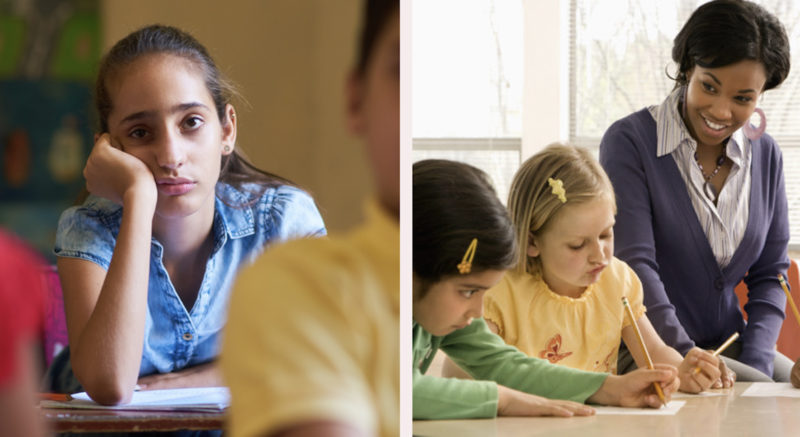
Recently, I conducted a survey of sixth through twelfth graders and asked them one simple question: What engages you as a learner? The responses flooded in from every school model out there—from each coast, and from districts both rural and urban. And no matter the student, their responses could be categorized into the same 10 strategies of student engagement.
I’ll be covering some of those strategies throughout this NEA Today series on student engagement, but my focus today is on rationale. I want to make the argument that by focusing on student engagement, you, the teacher, will be more engaged as well. It’s not the only reason to focus your practice on student engagement, but there’s no reason not to rank your own enjoyment of teaching high up on the rationale-meter.
As I say in my book, Just Ask Us: Kids Speak out on Student Engagement (Corwin, AMLE 2017), using engagement strategies to lure kids into learning—while it might seem draining—is actually an investment in your own energy as an educator.
Being engaging as a teacher is not just an investment in students; it’s also an investment in you and your quality of life.
 After all, I’m selfish. I want to like my job. I want to like how I spend my day. Focusing on student engagement, even before I focus on content, not only ups my own enjoyment and makes classroom management easier, it also happens to positively affect student achievement. It’s a win- win.
After all, I’m selfish. I want to like my job. I want to like how I spend my day. Focusing on student engagement, even before I focus on content, not only ups my own enjoyment and makes classroom management easier, it also happens to positively affect student achievement. It’s a win- win.
Neurologist-turned-educator, Dr. Judy Willis says that “when we scrub joy and comfort from the classroom, we distance our students from effective information processing and long-term memory storage.”
Boredom, as it turns out, isn’t just an energy-sucker, it’s a brainpower-sucker too. In other words, if a student is bored, a cycle can begin where the brain becomes less able to re-engage.
Yet, teachers often tend to focus their curriculum development efforts primarily in content standards—sometimes to the detriment of enjoyment.
Educator and author Kelly Gallagher says, “Engagement first, then content, then rigor.” In that order. Kids simply won’t learn if they aren’t engaged. For that reason, I believe that the student engagement standards are, in the land of Google-able answers, as important to utilize as the content standards.
So it’s also about doing a job we can be proud of. We can’t help our students without using engagement strategies. We as a profession are competing for these kids’ attention with so many other outside elements. We are competing against social media and Netflix. We are competing against having crushes and getting dumped. We are competing against hunger and homelessness, bullying, and abuse. We are competing against elements in our students’ lives that range from traumatic to simply more interesting, and those elements will win out…unless we prove to students that we or our curriculum can be more engaging.
The good news is that engagement is cyclical. If your students are engaged, you will be too. See, student engagement acts like a teacher’s batteries. The students’ eureka moments, their excitement, discoveries, and efforts recharge you. And much like your phone gets a new boost of energy after you slap on a spare charger, you get a new surge of engagement for each day the students are engaged.
 Heather Wolpert-Gawron
Heather Wolpert-Gawron
When that silent student in class appears online to praise and give feedback on another student’s essay, that engages us. When that seemingly bored student lifts his head from the desk in alert attention at the prospect of going outside to read under a tree, that engages us. When the student who never shares the air actively listens to her peers in her small group, seeking advice from others in the room, that engages us. When that student asks to use Minecraft to visualize the setting of her novel because she’s been allowed to choose her own way to show her knowledge, that engages us.
So to sum up the answer to the question: Why focus on student engagement? Here’s why:
- It increases student achievement.
- It makes classroom management easier.
- It increases teacher enjoyment in a really difficult job.
It’s become a part of our responsibility to not only teach the content, but to teach it in a way that stands a chance against the competition. And the only way to do it is to tackle our students’ levels of engagement.
Heather Wolpert-Gawron is a middle school teacher, a fellow of the National Writing Project, and a faculty member at Buck Institute for Education. This article is Wolpert-Gawron’s first in an NEA Today series about student engagement.






